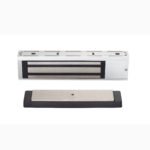A few weeks ago I mentioned that there would be a meeting with the Ohio Board of Building Standards to discuss the proposed code language allowing classroom barricade devices. Quite a few of you left comments, and like me, most felt that the proposed language does not go far enough to keep teachers and students safe. The meeting was held yesterday – here is an article about what transpired.
The Ohio law was passed in June requires the Ohio BBS to make rules to address the use of classroom barricade devices. My hope was that those rules would add some safeguards, but the code change proposal created by the Ohio BBS is in direct conflict with the board’s final report issued in July. This report established why the current codes are important, how they were developed, and supported the Board’s conclusion: “we do not recommend any change to the current building and fire codes at this time.” That’s what made the proposed code change so surprising to me.
There are many things that have me scratching my head when I compare the Board’s final report with the proposed code change. Here are just a few excerpts from the Board’s 26-page report…
OBBS Final Report: “First, these egress doors must be readily openable from the egress side without the use of a key or special knowledge or effort. While security is important — the code already attempts to balance security and safe egress — the life safety of occupants is essential. Special knowledge or effort would dictate the need for unusual and unexpected physical ability to unlock the egress door or make it fully available for egress and would thus increase the time necessary to exit. Fine motor skills are severely compromised in a time of emergency. Using devices that require specialized skill or knowledge will interfere with occupant egress, or possibly even prevent it altogether.”
LG: Many of the classroom barricade products on the market today require “special knowledge or effort” and fine motor skills to install/remove. The only criteria mandated by the code change proposal is that one additional operation may be used to remove the device, two additional operations if the building is sprinklered. There is no other guidance regarding the ease of removal of the device.
~~~
Ohio BBS Final Report: “Next, egress doors must not require that the doors and their operating components require tight grasping, tight pinching or twisting of the wrist to operate. People with disabilities are often unable to grasp objects with their hands or are unable to reach above or below the normal reach range specified in the building code and federal law (34” to 48” above the floor). Lever-operated mechanisms, push-type mechanisms and U-shaped door pulls accommodate the greatest range of users. This fundamental requirement minimizes the risk for the greatest number of occupants.”
LG: The code change proposal states, “Provisions of the ‘Americans with Disabilities Act of 1990,’ 104 Stat. 327, 42 U.S.C.A. 12101, as amended, may apply to the use of the temporary door locking device but are outside the scope of this code.” I have yet to see a classroom barricade device that meets the requirements of the ADA. Many are mounted outside of the acceptable range – sometimes within the 10-inch flush area at the bottom of the door, or they require tight grasping, tight pinching, or twisting of the wrist to operate. Are emergency plans for schools required to meet the ADA? They sure are! At least according to the FBI – see page 15 of their document called Guide for Developing High Quality School Emergency Operations Plans.
~~~
OBBS Final Report: “Lastly, the unlatching of any door or leaf must not require more than one operation. Requiring more than one motion – or adding multiple devices that must be engaged or disengaged to accomplish egress – compromises the safety of building occupants. There are several code-compliant options that meet this fundamental code requirement. More than one operation could be a safety hazard in an emergency situation, especially when the stress of such situations affects the abilities of individual users to quickly identify and operate such devices under emergency conditions. These essential requirements are reflected in the Ohio Building Code §§ 1008.1.9, 1008.1.9.1, and 1008.1.9.5, respectively.”
LG: Although the final report states that the safety of building occupants is compromised by products that require more than one operation to release, the code change proposal allows one additional operation, or two additional operations in sprinklered buildings. Along with the existing lockset or latchset, this means that up to 3 operations are acceptable in order to release the latch(es) and allow egress, when the report states that “more than one operation could be a safety hazard.”
~~~
OBBS Final Report: “The building code is a compilation of criteria with which materials, equipment, devices, and systems must comply to be suitable for a particular use and application in a building. Virtually every component used in building construction today has been tested, is listed, or is labeled evidencing its compliance with consensus standards. Through the Board’s certification the certified building departments evaluate the materials, equipment, devices and systems submitted to them for approval as code compliant and, when compliance is determined, approves them for use in a building.”
LG: No testing or listings are required by the code change proposal for classroom barricade products. Why is it that “virtually every component used in building construction today has been tested, is listed, or is labeled” but classroom barricade devices are not held to the same standard? What happens when a barricade device is in place and an intruder gives the door a few kicks? Can the device still be removed by the teacher to allow evacuation? That’s one of the questions that would be answered by testing and listing these products.
~~~
OBBS Final Report: “Likewise, ingress or access by emergency responders for treatment or search-and-rescue appear to be crucially impeded especially in the deployment of secondary door locking or barricade devices that are inherently designed to be un-openable from the exterior of the barricaded room. Many devices have no provisions for them to be deactivated from the outside by first responders or have some non-standard proprietary tools that first responders must carry and use in order for the devices to be overcome.”
LG: There is no requirement in the proposed code language addressing authorized access for emergency responders when a classroom barricade device is installed. Authorized access is one of the recommendations of the National Association of State Fire Marshals (NASFM), and is also included in the code change proposal for the 2018 IBC which is awaiting final approval. Given the possibility of a student or other unauthorized person installing the barricade device in order to commit a crime within the classroom, emergency access is extremely important. Although the proposed code change states that the device is only to be engaged by a staff member, how is that controlled?
~~~
OBBS Final Report: “Additionally, most of the devices are neither visible nor identifiable from the exterior of the barricaded or blocked door. This condition would be especially difficult for mutual aid first responders who may not be familiar with the use of a particular device or a device different from that used in their home community.”
LG: There is no requirement in the proposed code language to address the problem of being unable to identify barricaded doors from the outside, or the possibility that an emergency responder from another jurisdiction may not be familiar with the device. Valuable time is lost in a hostage/barricade situation when emergency responders attempt to breach barricaded doors, and there have already been barricading incidents with fatalities in schools.
~~~
OBBS Final Report: “It is also important to realize that most secondary locking/barricade devices require that the existing door or door frame be altered or have devices, brackets, stops, or guides installed on them. The action of drilling or mounting unlisted and unlabeled hardware on a rated door assembly can alter or affect the fire rating of the assembly.”
LG: Although the proposed code language states that the devices cannot be permanently attached to the door, it does allow portions of the devices such as bolts, stops, brackets, and pins to be permanently mounted on the door. Are temporary devices required because the ADA only addresses components that are permanently attached to the door? The proposal does state that these components must not affect the fire rating if the door is a fire door assembly, but it does not go so far as to require compliance with NFPA 80 – Standard for Fire Doors and Other Opening Protectives.
~~~
I’m not sure how else to try to affect the outcome in Ohio. I don’t want to wait around for a tragedy to occur so someone might hear what I’m saying. Any ideas?
You need to login or register to bookmark/favorite this content.





You would have thought by now that we would have heard enough about barricade devices. The owners of Flip Lok somehow got a Former Football Star’s company to invest in their product and now they are having a meeting about its use within our facility, I know nothing about this until my brother got an invite to the meeting, luckily enough he will be in Ireland at that time, so he told me. I have pulled up past articles from I Dig Hardware and all of the code references to let them know that these are not a good idea and cannot be used here.
Hi Richard –
Let me know if there is any other information you need.
– Lori